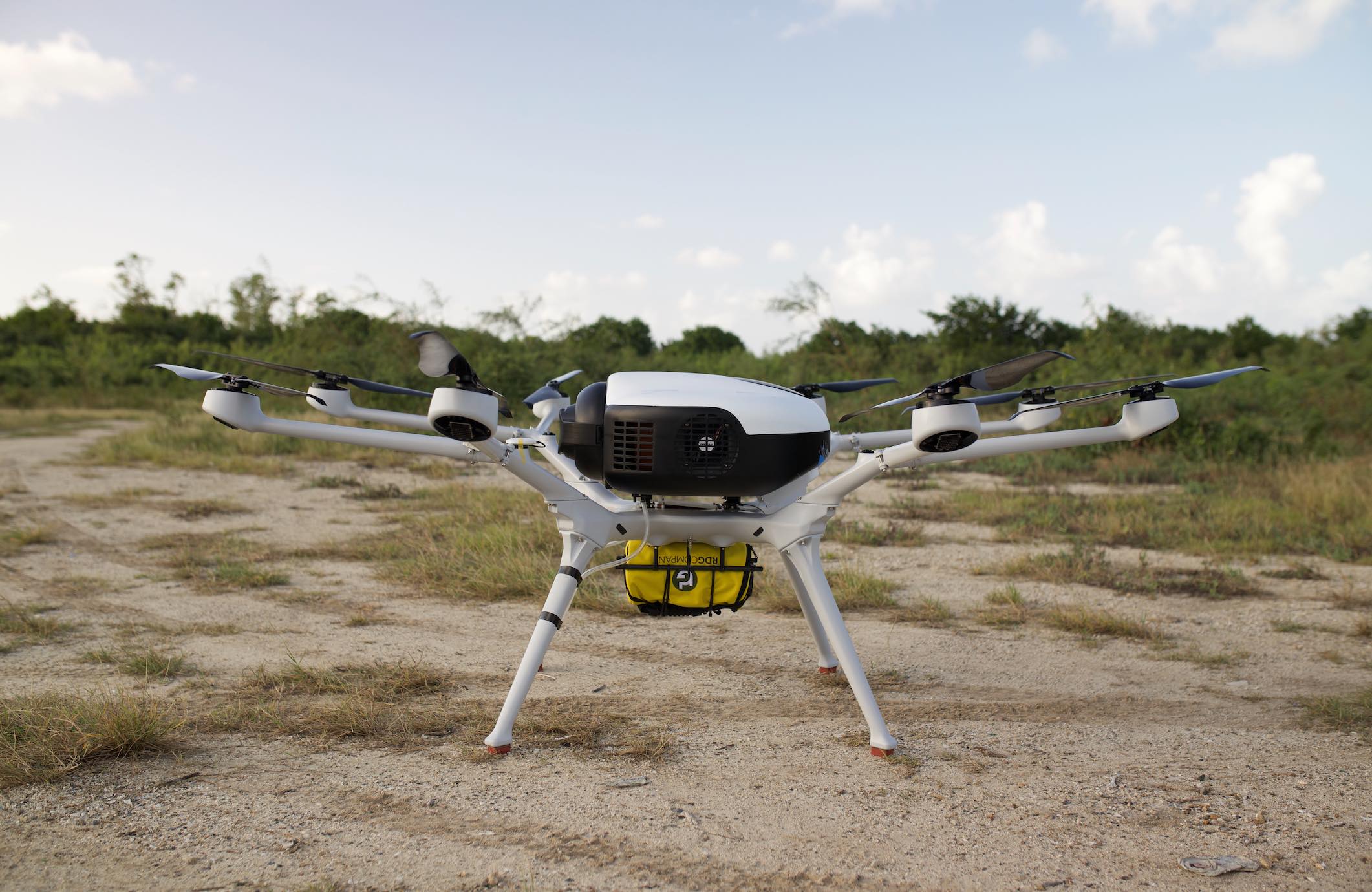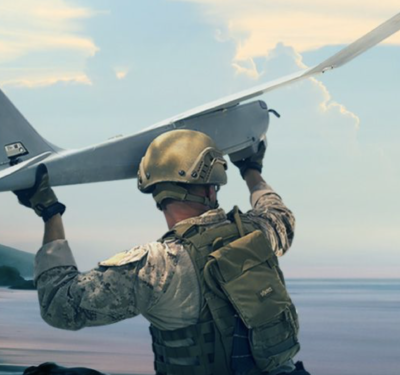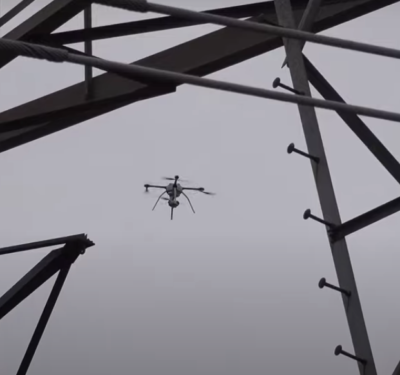
In a first for the U.S. unmanned aerial systems (UAS) industry, Skyfire Consulting, Doosan Mobility Innovation Inc., the U.S. Virgin Islands (USVI) Department of Health and other partners teamed up this week to successfully complete an open-ocean drone test flight between two islands in under two hours.
Driven by the goal of improving timely delivery medical services in the U.S. Virgin Islands, the Doosan hydrogen fuel cell-powered DS30 drone carried 40 simulation vials and health supplies for 43 miles, from a testing facility on St. Croix to a hospital on St. Thomas.
The team physically followed the flight by boat along with a Doosan pilot that hand-flew the drone throughout the full length of the trip while traveling at an average speed of 23 knots. At the end of the flight when the drone landed on St. Croix, there was still 30 minutes of supply left in its tank.
The collaborative effort, which is supported by the Association of Public Health Laboratories (APHL), began two years ago in the wake of Hurricane Maria. The USVI Department of Health was challenged to find better ways to move medical samples and supplies between islands, particularly when infrastructure was down and traditional methods like seaplanes and boats were too slow or inaccessible.
“We started having conversations about whether a drone could be used for this purpose,” said Matt Sloane, CEO of Skyfire Consulting. “At the time, we had doubts about whether a drone could really make a difference due to the distance between islands. That’s when we brought Doosan into the mix and started discussing how their hydrogen fuel cell technology could help us achieve that flight time.”
The Doosan DS30 is the world’s first fuel cell powerpack that enables long-endurance flight for different commercial drone models and applications. The multirotor drone’s technology enables long-endurance flight up to 120 minutes (without payload) and is capable of handling up to 11 pounds.
While the public health industry has used long-range fixed wing drones for these types of applications, Sloane said they opted to use a multirotor due to its precise takeoffs and landings, low risk of getting damaged and ability to be flown fairly easily by an operator—it also goes further.
“The industry was not at a point where multi-rotors could do this from a distance until recently,” he said. “We are seeing this domestically as a part of Integration Pilot Programs delivering organs and blood samples, but the sheer distance of this one makes it really interesting, and a first for the U.S.”
When planning for the test, the team wanted to remove as many variables as possible that would complicate the flight, so they opted not to program any autonomy or use third-party software.
The long term goal, Sloane said, is for someone to be able to take a blood sample at the hospital, stick it on a drone, press a button and have it fly 43 miles to the public health lab within an hour to test it.
For now, they’re focused on the basics required to make this a viable solution for the future, which means being able to fly the drone in 80-90 percent of weather conditions, looking at deployment methods and determining how to autonomously pilot the flights.
The team is studying data from the flight and starting applications for beyond visual line of sight (BVLOS) approval from the Federal Aviation Administration (FAA) so that one day this can be used not just in emergency situations, but on a daily basis.
“This is very significant in the unmanned industry, and it has a true, real-world application that can really help people,” said Sloane. “The quicker they can get results, the better they can make decisions about their health. That’s a cool type of project to be a part of that will have a significant impact.”






